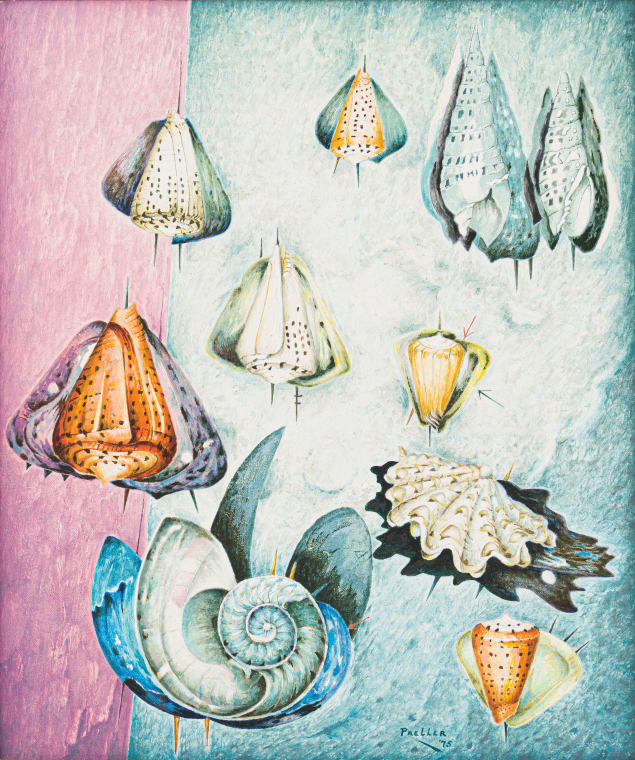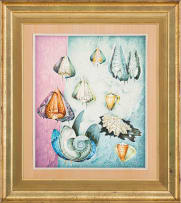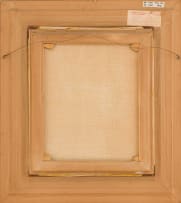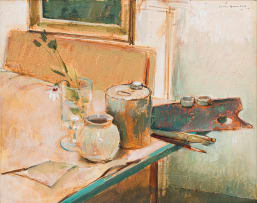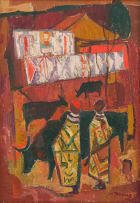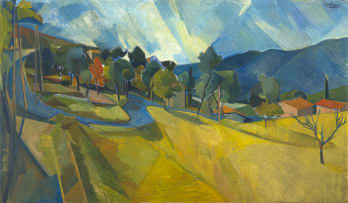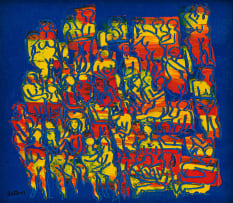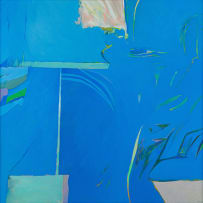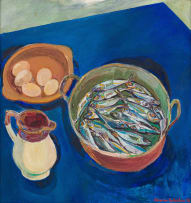Shells
Alexis Preller
Incl. Buyer's Premium & VAT
About this Item
signed and dated '75; inscribed with the artist's name and the title on a Pretoria Art Museum label adhered to the reverse
Notes
Preller started experimenting with the visual and symbolic potential of shells as early as the mid-1940s, shortly after his return to Pretoria from the North African Campaign. Spider conch shells featured in post-war paintings such as Abandoned City (1944) and Parachutist (1945). That he was able to continue to adapt and rework the motif through the subsequent four decades, always with startling beauty and within diverse contexts, emphasises his inexhaustible creative powers. He could use a conus shell, for instance, from his liberating trip to the Seychelles in 1948, for a spectacular if simple still life subject; collections of speckled shells from the East African coast, displayed in neat rows as if in open vitrines, appeared in the central panel of the vast All Africa triptych (started in 1953); similar conus shell forms enclosed the figures in the enigmatic, milestone painting, Hieratic Women (1955); while a late-career architectonic shell, hanging in aquamarine space, was a typically Prelleresque take on the Tower of Babel. In the current lot, a variety of shells float against a beautiful two-toned and diaphanous background of pink and grey-blue. Each shell might recall another of the artist's paintings from the past, but together, drifting in space, they make up a unique and offbeat still life composition. Shells was certainly related to two other intriguing works from 1974, both titled C'est Magnifique, that combined a shell and skull for the first time in the artist's career. Despite his deteriorating health through 1974 and 1975, each of these late works relied on the same pin-sharp detail and uplifting colour combinations that often characterised his impressive and complex output.
